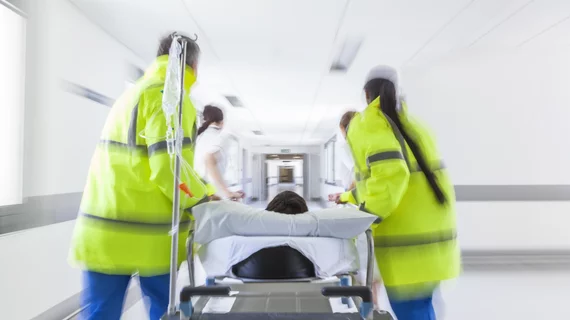CVD deaths have increased dramatically, undoing years of progress
Deaths related to cardiovascular disease (CVD) declined in the United States for several years—and then the COVID-19 pandemic hit in 2020.
According to a new analysis in the American Journal of Preventive Medicine, in fact, CVD mortality increased by more than 9% from 2019 to 2022.[1] The study’s authors examined this trend at length, offering some potential explanations for why things have not started returning to normal quite yet.
Lead author Rebecca C. Woodruff, PhD, a researcher with the National Center for Chronic Disease Prevention and Health Promotion, and colleagues examined national mortality data from 2010 to 2022. Nearly 11 million CVD deaths occurred during that time, with heart disease (75.6%) and stroke (16.9%) being the two most common causes by a significant margin .
From 2010 to 2019, the CVD age-adjusted mortality rate (AAMR) per 100,000 patients declined by 8.9. The heart disease AAMR declined by 9.9%, and the stroke AAMR declined by 5.6%.
From 2019 to 2022, however, the CVD AAMR increased by 9.3%, representing “nearly a decade of lost progress.” The heart disease AAMR increased in 2020, increased again in 2021 and then stayed relatively steady in 2022. The stroke AAMR increased in 2020, 2021 and 2022.
Diving deeper into the data, Woodruff et al. found that an estimated 228,524 excess CVD deaths occurred from 2020 to 2022; this means 9% more deaths occurred during that time than one would expect based on trends from 2010 to 2019. Excess deaths were the most common among adults between the ages of 75 and 84, Black adults and Asian/Pacific Islander adults.
“Increases in CVD mortality rates among adults during the initial years of the COVID-19 pandemic endured into 2022, despite stabilization of the public health emergency,” Woodruff and colleagues wrote. “This represents a reversal of sustained progress in the preceding decades of reducing CVD mortality rates in the United States.”
The researchers identified several potential explanations for why this CVD mortality has not made a more dramatic shift back to pre-COVID levels.
“Emerging evidence suggests that acute cardiac events among adults hospitalized with COVID-19 are common and that people recovering from COVID-19 are at increased risk for new or worsening CVD up to one year post-infection, which may partly explain increases in CVD deaths after 2020,” they wrote. “Additionally, patient hesitancy to seek care and disrupted access to healthcare in the months after the onset of the pandemic may have led to delayed detection and treatment of acute or chronic CVD and related risk factors. Worsening or persistent stagnating trends in CVD risk factors preceded the COVID-19 pandemic and might have been accelerated by pandemic-driven disruptions to daily life that complicated efforts to engage in health-promoting behaviors known to reduce CVD risk.”
The author also highlighted multiple initiatives in the United States focused on improving CVD mortality in the United States, including the Million Hearts Initiative and Well-Integrated Screening and Evaluation or Women Across the Nation program. Despite these efforts, however, these findings show that there is a “need for broader prevention efforts moving forward.”

